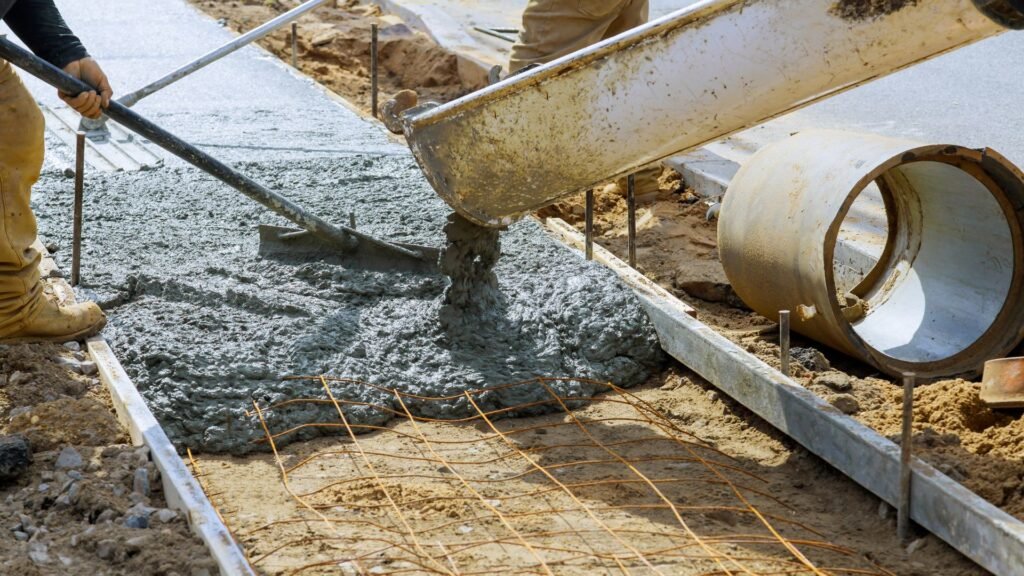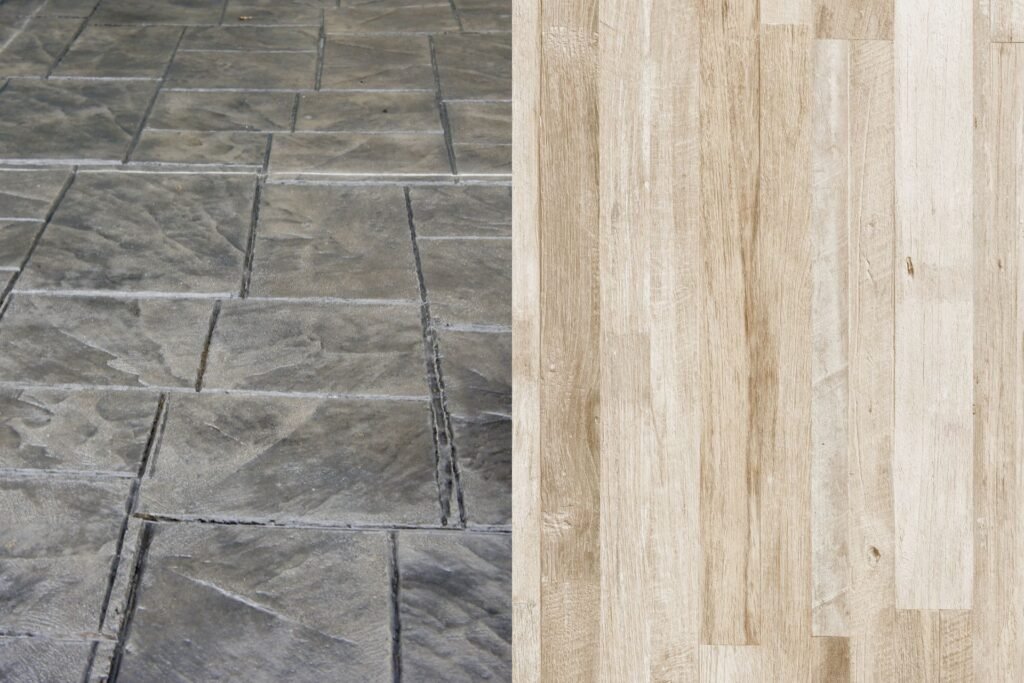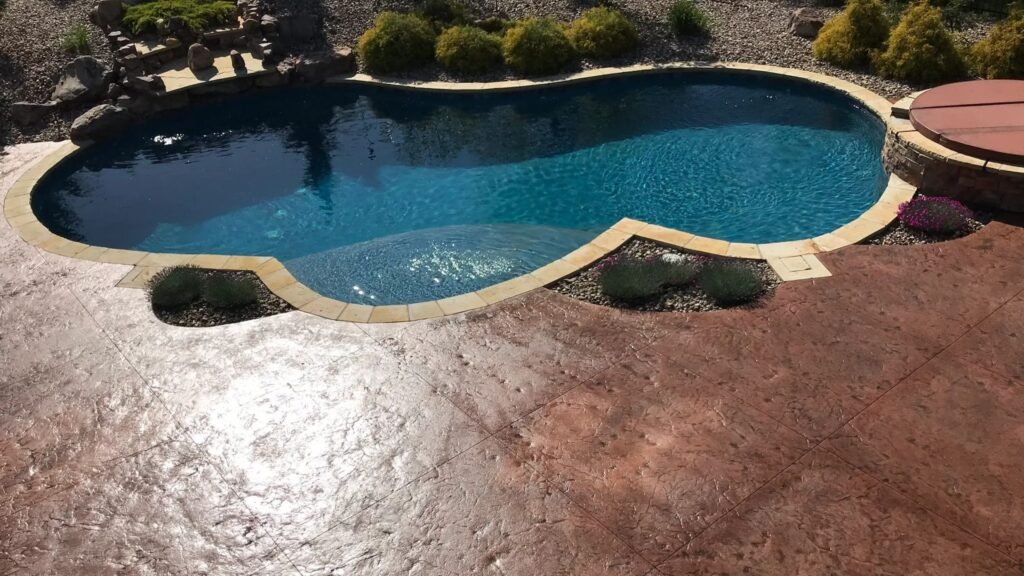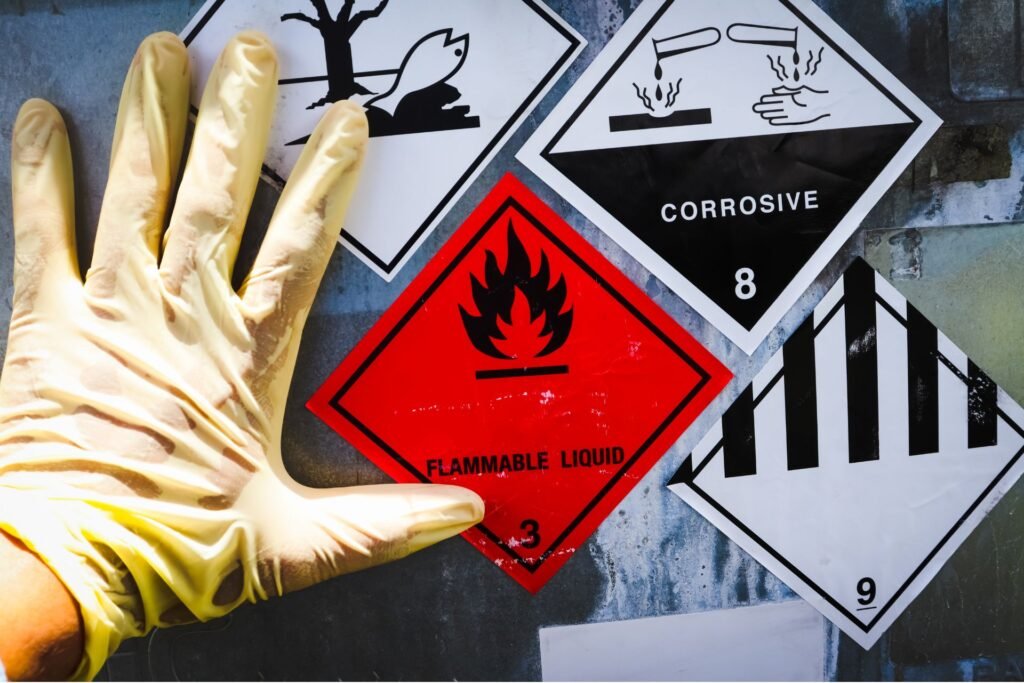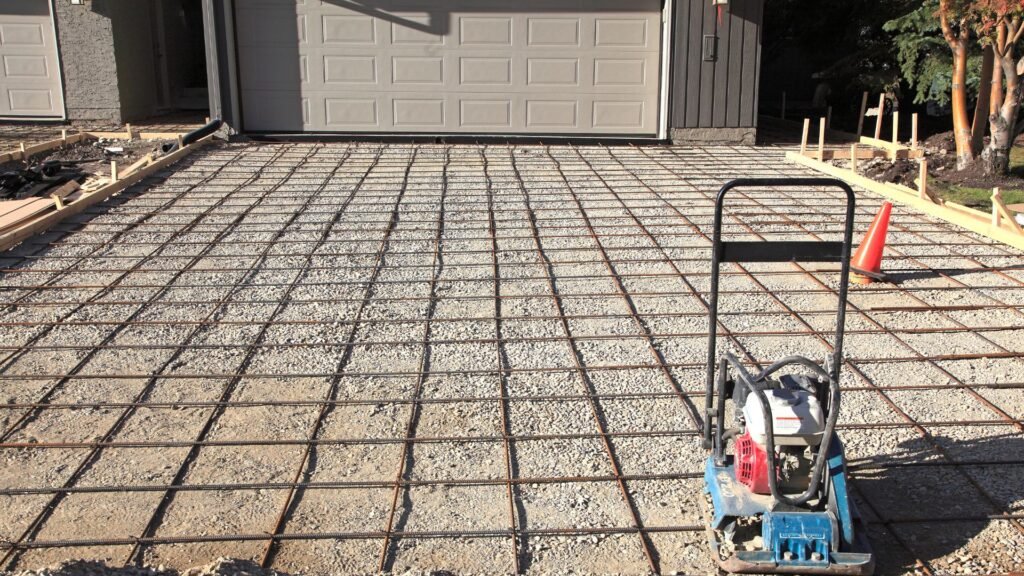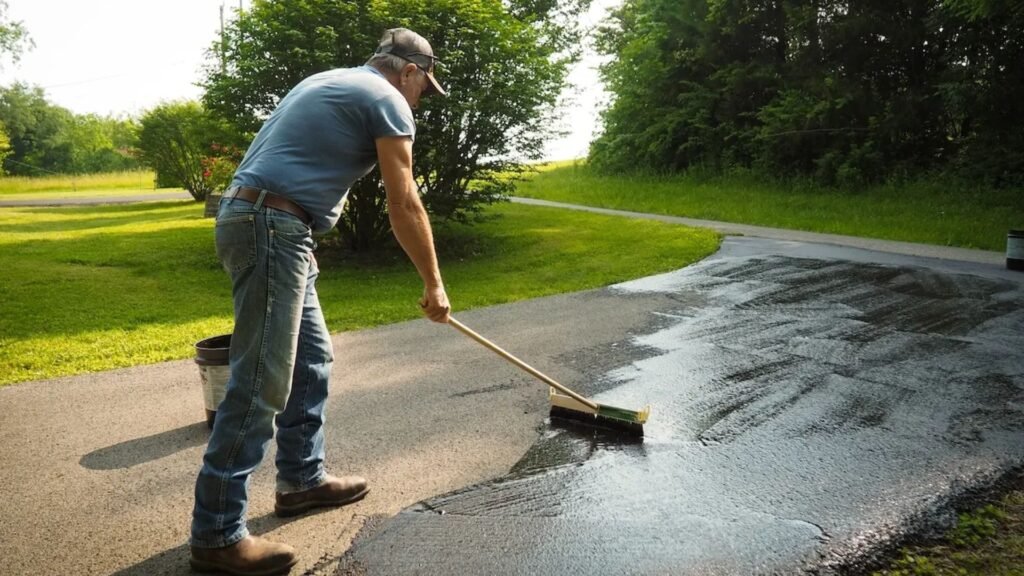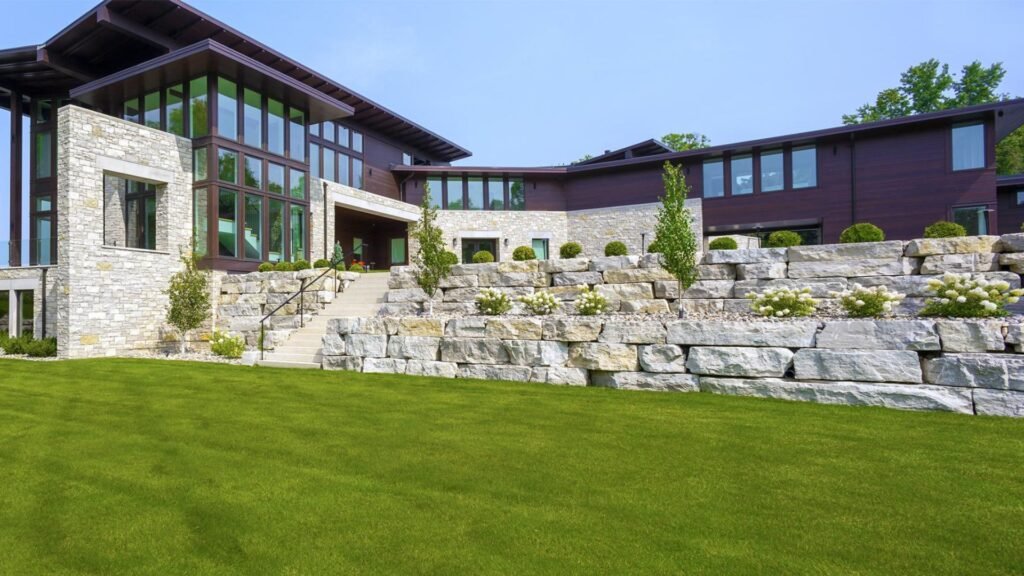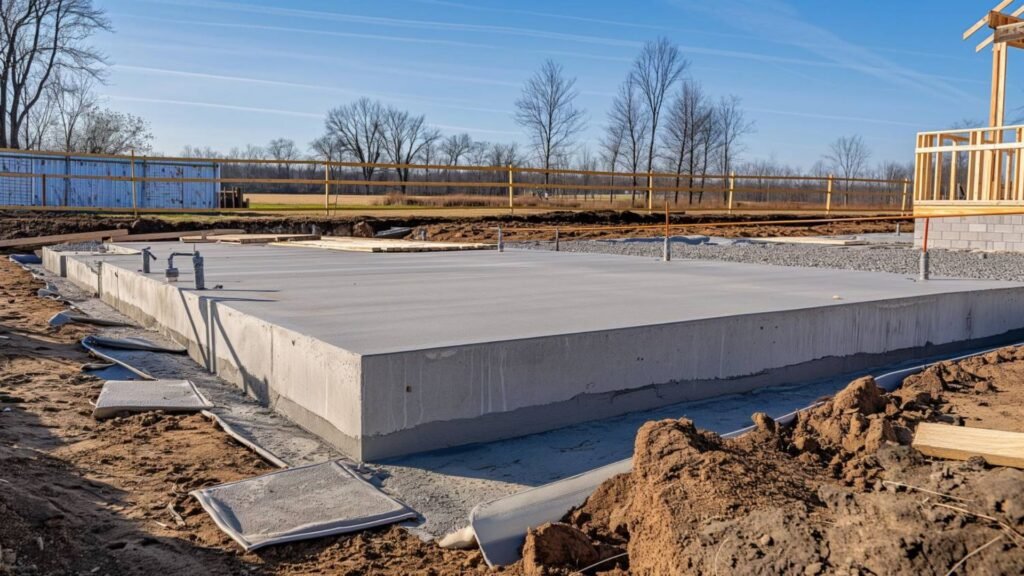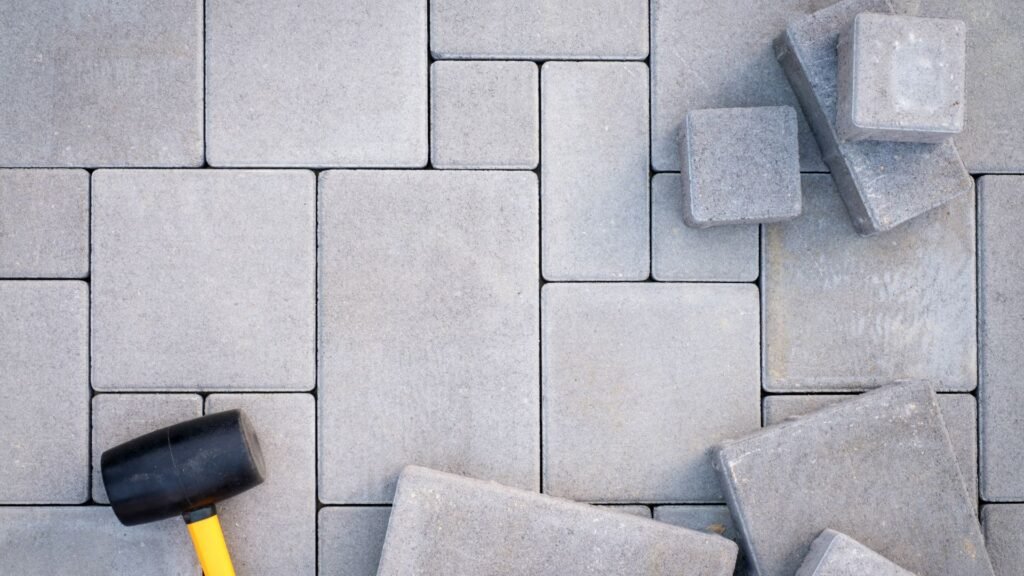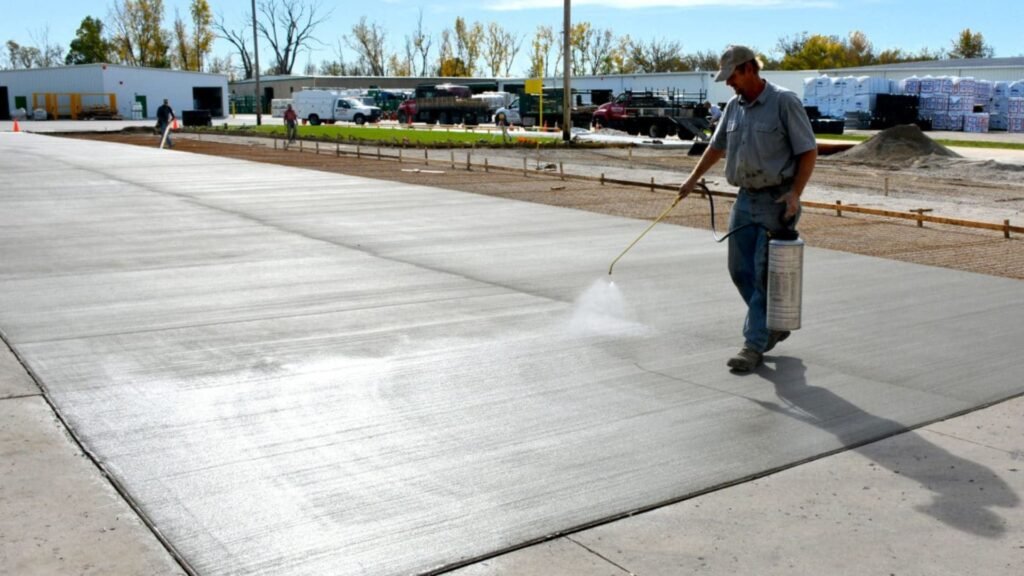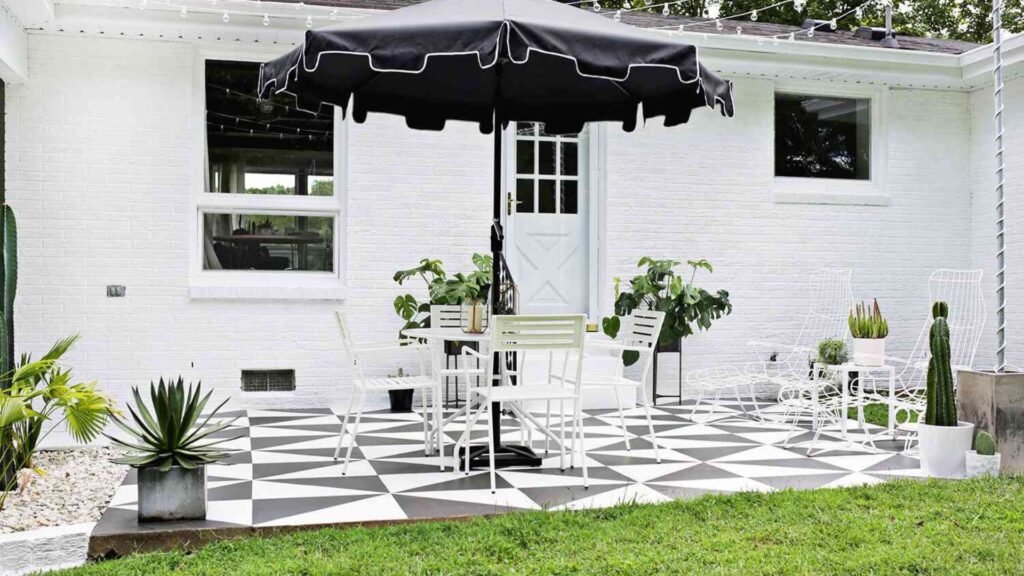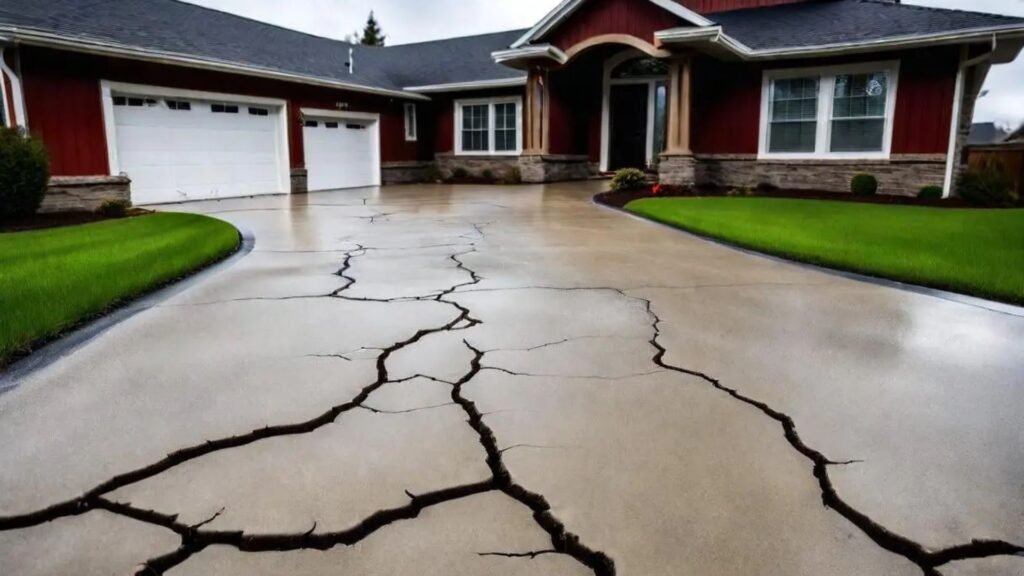Welcome to our guide on whether you should cover concrete after pouring. If you’re working on a project like a new driveway, patio, or foundation, you probably know how crucial it is to get everything right especially when it comes to concrete. One of the most common concerns is how to ensure that the concrete cures properly, and a big part of that is deciding whether or not to cover it. In this post, we’ll explore why covering concrete is often necessary, how it helps protect your investment, and the best methods to ensure long-lasting, crack-free concrete, no matter the weather. Let’s dive into why this simple step can make all the difference!
Covering concrete after pouring is essential in certain conditions to ensure proper curing. It helps retain moisture, prevents rapid drying, and protects the surface from weather elements like rain or extreme temperatures. Use materials like plastic sheets or curing blankets, especially in hot, cold, or windy conditions, to prevent cracks and ensure the concrete reaches its full strength. Properly covering concrete can significantly improve its durability and longevity.
Table of Contents
Understanding The Concrete Curing Process
Concrete curing is a vital step in construction that significantly impacts the strength, durability, and longevity of any concrete structure. This process involves maintaining adequate moisture, temperature, and time to allow the chemical reaction between water and cement, known as hydration, to take place effectively. Without proper curing, even the best concrete mix can fail to achieve its full potential, leading to structural problems down the line.
What is Curing?
Curing refers to the process that begins after the concrete has been placed and finished. It ensures that the hydration process occurs properly, which is the chemical reaction between water and cement. This reaction is crucial as it leads to the hardening and strengthening of the concrete over time. Proper curing maintains the necessary moisture levels to allow this reaction to continue. Without it, the water required for hydration can evaporate too quickly, preventing the concrete from gaining its intended strength.
The concrete curing process is often misunderstood or rushed, but it’s one of the most important phases in construction. During hydration, tiny crystals form and grow, interlocking within the concrete, which increases its compressive strength. If this process is interrupted or inadequate, the concrete will not reach its full potential, making it prone to cracks, reduced durability, and other structural issues.
Why Proper Curing is Essential for Concrete Longevity
Concrete is a porous material that requires adequate moisture retention to ensure that the hydration process occurs completely. Proper curing provides the ideal environment for this process, and as a result, the concrete achieves its intended strength and durability. Retaining moisture, particularly during the early stages of curing, ensures that the hydration process continues uninterrupted.
Improper curing, on the other hand, can cause several significant problems. One of the most common issues is cracking. When concrete dries out too quickly, it can shrink, leading to surface and internal cracks. These cracks can compromise the integrity of the entire structure, allowing water and other substances to penetrate, which can cause further deterioration like scaling or spalling.
In addition to cracking, improper curing can result in reduced surface strength, making the concrete more vulnerable to wear and tear. Over time, this can lead to surface scaling, where the top layer of concrete begins to flake off, further exposing the structure to environmental damage.
Overall, proper curing is critical for ensuring the long-term performance and durability of concrete. By allowing the concrete to properly hydrate, it gains the strength necessary to withstand the pressures of its environment, helping to prevent premature failures, and extending the life of the structure.
In summary, the curing process in concrete is more than just a phase in construction—it’s a crucial component that determines the strength and longevity of the final product. Proper curing involves moisture retention and time management to ensure the concrete reaches its full potential. Failing to cure concrete properly can lead to serious issues like cracking and reduced durability, compromising the structure’s safety and lifespan. Thus, investing time and effort into proper curing is essential for any successful concrete project.

Factors That Affect Concrete Curing
Concrete curing is a critical process that directly impacts the strength, durability, and overall quality of the finished structure. Several key factors can influence how well concrete cures, and understanding these can help ensure optimal results in any construction project.
Weather Conditions
Weather plays a significant role in the curing process of concrete. The curing process largely depends on temperature and humidity, and different weather conditions can either accelerate or hinder the hydration process that concrete undergoes during curing.
- Hot Weather: High temperatures can cause concrete to lose moisture too quickly, which can lead to improper curing. Rapid moisture evaporation can cause shrinkage cracks and prevent the concrete from reaching its full strength potential. To combat this, contractors often use techniques like damp curing, shading, or even spraying water on the surface to slow down evaporation.
- Cold Weather: On the other hand, low temperatures can slow down the chemical reactions involved in the hydration process, extending the curing time. If the temperature drops too low, especially below freezing, the water in the concrete can freeze, disrupting the curing process and compromising the concrete’s structural integrity. This is why concrete is often covered or insulated in cold weather conditions to retain heat and promote proper curing.
- Rainy Conditions: Excess moisture from rain can disrupt the surface of fresh concrete, especially if it occurs in the early stages of curing. The excess water dilutes the mix, weakens the surface layer, and can cause surface defects like scaling. Protective coverings like tarps are often used to shield freshly poured concrete from rain.
- Windy Conditions: Wind increases the rate of moisture evaporation from the surface of concrete, which can result in rapid drying and surface cracks. The hydration process requires a certain level of moisture, and excessive wind can strip away that moisture too quickly, leading to improper curing.
Moisture Levels
Maintaining adequate moisture is crucial to the concrete curing process. Concrete must retain water to undergo the chemical reaction known as hydration, which is essential for hardening and gaining strength. If the surface of the concrete dries out too quickly, the hydration process is interrupted, leading to a weaker final product.
- Importance of Moisture: Ensuring that the concrete stays moist for an extended period allows the hydration process to continue, which results in stronger concrete. Methods like misting the surface, using curing compounds, or covering the concrete with wet burlap or plastic sheeting are common practices to help maintain moisture levels.
- Effects of Drying Out Too Quickly: If concrete dries out prematurely, it can lead to shrinkage cracks, a common issue when the top layer loses moisture faster than the internal layers. These cracks not only compromise the aesthetics of the concrete but also weaken its structural integrity, potentially leading to costly repairs down the road.
Time
Time is another critical factor in concrete curing. Concrete doesn’t just harden in a day; the curing process unfolds over days, weeks, and even months.
- First 48 Hours: The initial 48 hours after pouring are crucial because this is when the concrete gains most of its strength. During this period, it’s essential to maintain optimal moisture levels and protect the concrete from extreme weather conditions. Improper care during this time can result in weak spots and surface cracks that affect the concrete’s long-term durability.
Stages of Curing: Concrete curing happens in two main stages
1. Initial Curing: This occurs in the first few days, with the majority of strength development happening in the first week. During this time, concrete can gain about 70% of its final strength, assuming proper curing conditions are maintained.
2. Final Curing: Concrete continues to cure and gain strength for weeks or even months after the initial pour. While concrete may be usable after a few days, the hydration process can continue for up to 28 days or more, allowing it to reach its full strength potential.
The factors that influence concrete curing weather conditions, moisture levels, and time are all interrelated and play a vital role in determining the success of the curing process. Proper planning and monitoring during curing can ensure that concrete achieves the desired strength and durability, resulting in a high-quality, long-lasting structure.

Should I Cover The Concrete After Pouring?
When it comes to ensuring the durability and longevity of your freshly poured concrete, the curing process is crucial. A key part of this process is covering the concrete after pouring, which helps protect it during its initial hardening phase. Let’s dive into why covering freshly poured concrete is often necessary, in which situations it becomes essential, and how it compares to other common curing methods.
Yes, Covering is Often Necessary
Covering concrete after pouring is an important step, especially when environmental conditions could negatively impact its strength and finish. Whether you are working on a small project like a sidewalk or a larger one such as a patio or driveway, understanding when and why to cover the concrete can make a big difference in its quality over time.
Why You Should Cover Freshly Poured Concrete
Freshly poured concrete needs a consistent amount of moisture to cure properly. The curing process allows the concrete to reach its maximum strength, and if the moisture content fluctuates too much, it can cause cracking, shrinkage, or an uneven surface. Covering concrete after pouring helps in the following ways:
1. Retaining Moisture: Concrete needs to stay moist for the chemical process of hydration to complete. By covering it, you create a controlled environment that locks in the moisture necessary for optimal curing.
2. Preventing Rapid Drying: Especially in hot or windy conditions, concrete can dry out too quickly. This rapid drying can lead to surface cracks or weakened structural integrity. A cover acts as a barrier to prevent excessive evaporation.
3. Protecting from Debris: Dust, leaves, or other particles can land on your freshly poured concrete, affecting its finish. Covering the surface keeps these unwanted materials away.
Situations When Covering is Essential
While covering concrete is always a good practice, certain environmental and situational factors make it necessary. Here are the key scenarios where covering becomes essential for the curing process:
Extreme Weather Conditions
- High Heat: In scorching temperatures, concrete tends to dry out too quickly. Covering helps keep the surface cool and retains the moisture needed for proper hydration.
- Cold Weather: Cold can slow down the curing process significantly. In freezing conditions, the water in the concrete can freeze, causing cracks. Insulating blankets or thermal covers are especially useful in such cases to keep the concrete warm and curing at a steady rate.
- Heavy Rain: Excess water can disrupt the surface of freshly poured concrete, leading to a rough, uneven finish. A protective cover shields the surface from rainfall, ensuring a smooth and uniform appearance.
Large Surface Areas
- Driveways, patios, and other large slabs are more exposed to the elements. Because these areas take longer to set and cure fully, covering them helps maintain an even moisture level across the entire surface, reducing the risk of cracking or surface imperfections.
Covering vs. Other Curing Methods
While covering is an effective method for curing concrete, it is not the only option. Let’s take a look at how it compares to other common techniques like misting and curing compounds:
Covering with Plastic Sheets or Blankets
- Pros: Simple, affordable, and effective at maintaining consistent moisture. Plastic sheets are easily accessible, and insulating blankets can be used in colder conditions.
- Cons: If not applied properly, plastic sheets can trap too much heat or cause uneven drying in certain areas. You need to ensure that the covering is tight and evenly distributed.
Misting
- Pros: Misting is ideal for maintaining moisture in hot, dry conditions. By periodically spraying the surface with water, you prevent it from drying too fast.
- Cons: Misting requires more maintenance and monitoring compared to covering. You have to mist regularly to keep the surface consistently wet, and this method may not be suitable in areas with water restrictions.
Using Curing Compounds
- Pros: Curing compounds are chemical products applied to the surface of the concrete that form a protective layer, preventing moisture loss. These are easy to apply and require less monitoring compared to misting or covering.
- Cons: Once applied, the curing compound can leave a residue that may need to be removed before other treatments (like sealing or staining) are applied to the concrete. Additionally, using curing compounds can be more expensive than the other methods.
In most cases, covering freshly poured concrete is a crucial part of the curing process, especially in extreme weather conditions or for larger surface areas. It helps retain moisture, prevent surface damage, and ensures the concrete achieves its maximum strength. However, depending on your specific project and environmental factors, you may want to explore other curing methods like misting or curing compounds. Each method has its benefits, but covering remains a simple, effective solution for most concrete pours.

Best Practices For Covering Concrete
Concrete curing is a critical process that determines the final strength, durability, and appearance of the structure. Covering concrete during the curing phase is essential to prevent rapid moisture loss and temperature fluctuations, which could compromise its quality. Let’s break down the best practices for properly covering concrete, when to remove the cover, and how to avoid common mistakes.
How to Properly Cover Concrete
Properly covering concrete can help retain moisture and regulate temperature, allowing it to cure effectively. Here’s a step-by-step guide to ensure you’re using the correct methods:
Choose the Right Material
Select from options like plastic sheets, burlap, or curing blankets. These materials help retain moisture and protect the concrete surface from extreme weather conditions. Each material has specific uses:
- Plastic sheets: effective for creating a vapor barrier but may trap excessive heat.
- Burlap: Great for water retention when kept damp.
- Curing blankets: Ideal for cold weather, providing insulation while keeping moisture levels stable.
Ensure the Cover Doesn’t Stick
When using plastic sheets, make sure they don’t come into direct contact with the concrete. If they stick, they can leave unsightly marks on the surface or even damage the concrete. Use spacers or small blocks to keep the cover slightly elevated, allowing air circulation and preventing direct contact. This is especially important if the concrete is still fresh and hasn’t set completely.
Monitor Temperature and Moisture
Maintaining consistent moisture and temperature is crucial for proper curing. Avoid trapping too much heat under the cover, as excessive warmth can cause the concrete to dry out too quickly, leading to cracks. Similarly, check that the concrete remains damp, especially in hot or windy conditions. You may need to lift the cover occasionally to apply water if the top surface appears dry.
By following these steps, you’ll ensure your concrete has the best conditions to cure correctly, leading to a strong, durable finish.
When to Remove the Cover
Knowing when to remove the cover is just as important as covering the concrete in the first place. Timing is key to avoid disrupting the curing process:
Wait for the Right Timeline
The general rule is to keep the concrete covered for at least 24 to 48 hours. However, factors like the type of concrete mix, environmental conditions, and project size can extend this timeline. In cooler climates or during winter months, you may need to keep the cover on for several days to prevent the concrete from freezing or drying out too quickly.
Check for Signs of Proper Curing
Before removing the cover, inspect the concrete for signs that it’s curing well. The surface should feel firm and solid, with no visible cracking or scaling. If you’re planning to start finishing or allow foot traffic, gently press the surface if it feels soft or gives slightly under pressure, the concrete isn’t ready yet.
Gradual Removal
Instead of pulling the cover off all at once, consider removing it gradually. This helps the concrete adjust to the environmental conditions, especially in fluctuating temperatures. If the concrete is exposed to direct sunlight or wind too quickly, it could crack or develop surface issues.
Avoiding Common Mistakes
Even a minor mistake in covering concrete can lead to significant issues like discoloration, surface damage, or weakened strength. Here are some common pitfalls to avoid:
Using the Wrong Material
Not all covers are suitable for all conditions. For example, using a plastic sheet in hot weather without proper spacing can trap excessive heat, causing the concrete to dry too fast and crack. On the other hand, using burlap in freezing conditions without a curing blanket might not provide enough insulation, leading to potential freezing.
Removing the Cover Too Early
One of the most common mistakes is impatience. Removing the cover too soon can lead to rapid moisture loss, which weakens the concrete’s final strength. This can cause shrinkage cracks and a brittle surface. Always follow the recommended timeline and monitor the surface before making any moves.
Failing to Maintain Proper Moisture Levels
If the cover allows too much evaporation or dries out, the concrete won’t cure evenly. Keep the cover moist, especially if you’re using burlap. Check the concrete regularly and ensure that it stays damp throughout the curing period. Neglecting this can result in uneven curing, leading to discoloration and surface defects.
By adhering to these best practices and avoiding common mistakes, you can ensure your concrete cures properly, resulting in a durable, long-lasting surface that looks as good as it functions.

Covering Concrete In Different Weather Conditions
Weather conditions play a crucial role in the success of any concrete project. Whether you’re working in hot, cold, or rainy climates, understanding how to protect and care for your freshly poured concrete is essential for ensuring durability and strength. Let’s dive into how different weather conditions affect concrete and the best practices to handle these situations effectively.
Hot Weather: Keeping Concrete Hydrated
In hot weather, high temperatures can cause the concrete to lose moisture too quickly. When concrete dries too fast, it can lead to cracks, reduced strength, and improper curing, which diminishes its long-term durability. Rapid moisture loss is a common problem in hot climates because the sun and heat can evaporate the water necessary for the concrete’s hydration process.
Covering the concrete helps to maintain its moisture levels, allowing for proper hydration and strength development. Here are some effective strategies for working with concrete in extreme heat:
1. Use Cool Water: When mixing concrete in hot weather, using cold or cool water can help regulate the temperature of the mix, slowing down the hydration process and preventing it from drying out too quickly.
2. Apply Curing Compounds: A curing compound acts as a protective layer that locks in moisture. This compound can be sprayed on the surface of the concrete, especially during the initial stages of curing, to help prevent rapid water loss due to heat.
3. Timing is Crucial: It’s best to pour concrete early in the morning or late in the evening when temperatures are cooler. Avoid working during the hottest part of the day to minimize the risk of cracks.
4. Shade and Wind Barriers: Creating shade or using windbreakers around the concrete can reduce exposure to direct sunlight and wind, further minimizing moisture loss.
By taking these steps, you ensure that your concrete stays hydrated and develops the necessary strength, even in scorching temperatures.
Cold Weather: Protecting Concrete from Freezing
Cold weather poses its own set of challenges when it comes to concrete. The hydration process slows significantly in freezing temperatures, and if the water in the concrete mix freezes, it can cause the concrete to expand and crack. This is why it’s crucial to protect freshly poured concrete from the cold.
One of the best ways to ensure that your concrete cures properly in cold conditions is to use insulating blankets. These blankets help trap heat within the concrete, allowing the hydration process to continue despite the cold air outside.
Here are some tips for working with concrete in cold weather:
1. Pre-Warmed Materials: If possible, pre-warm the water and aggregates before mixing concrete in cold conditions. This helps keep the temperature of the mix above freezing during the early stages.
2. Insulating Blankets: Once the concrete is poured, covering it with insulating blankets can keep it warm enough to cure properly. These blankets trap heat and protect the concrete from cold temperatures, especially overnight.
3. Curing Agents: Some curing agents are designed to work better in colder climates. These agents can be applied to accelerate the curing process, allowing concrete to gain strength even in less-than-ideal weather conditions.
By using the right insulation and taking precautions, you can protect your concrete from freezing and ensure it hardens properly, even in cold climates.
Rainy or Humid Conditions: Managing Excess Moisture
Rain and humidity can pose significant risks to freshly poured concrete. Excess water on the surface of the concrete can dilute the mix, weakening the structure and increasing the chance of cracks and surface imperfections. Humidity, while not as immediately damaging as rain, can also affect how quickly the concrete sets.
Here’s how to handle concrete in rainy or humid conditions:
1. Covering the Surface: Before a rainstorm hits, cover the concrete with plastic sheeting or tarps. This helps keep rainwater off the surface and prevents it from diluting the concrete mix. Make sure the cover is securely fastened to prevent it from blowing away during a storm.
2. Ensure Proper Drainage: If there’s a chance of rain, ensure the area around the concrete is well-drained so that any accumulated water doesn’t pool underneath or around the edges. This helps prevent water from seeping into the concrete mix.
3. Timing: Just like with hot weather, timing is everything. Try to schedule pours for when rain is least likely. If rain is unavoidable, consider postponing the project until the weather is more favorable.
4. Humidity Considerations: High humidity can slow down the drying process, so it’s essential to give the concrete extra time to cure. Avoid covering the concrete too early in humid conditions, as trapped moisture can cause issues like blisters on the surface.
By following these best practices, you can minimize the effects of rain and humidity, ensuring your concrete cures properly and develops its full strength.
Weather plays a critical role in the quality of concrete work. Whether you’re dealing with hot, cold, or rainy conditions, taking the proper precautions ensures that your concrete remains durable and strong for years to come. By managing moisture levels, temperature, and timing, you can overcome weather challenges and achieve optimal results in any climate.

Alternative Curing Methods
Concrete curing is a critical step in ensuring the strength, durability, and longevity of the material. While traditional methods such as physical coverings are widely used, alternative curing methods can often be more convenient or effective, depending on the project’s specific requirements. In this section, we’ll dive into some of these alternatives, such as curing compounds, water-curing techniques, and hybrid approaches that blend multiple methods for optimal results.
Curing Compounds
Curing compounds provide a practical alternative to the use of physical coverings like plastic sheeting or wet burlap. These compounds are typically applied as a liquid spray to the surface of freshly poured concrete. They work by forming a protective film that seals the concrete’s surface, minimizing water loss, which is essential for proper hydration during the curing process.
How Curing Compounds Work
Curing compounds act as a barrier to moisture evaporation, keeping the concrete hydrated as it hardens. They often contain resins, waxes, or other chemicals that create a temporary seal. This method is particularly useful in situations where covering the concrete with physical materials might be logistically challenging or when the surface area is large or irregularly shaped.
When Curing Compounds Are Effective
Curing compounds are highly effective in situations where it’s impractical to keep concrete consistently moist using traditional water-based methods. For instance, in large-scale commercial projects or vertical surfaces like walls and columns, applying a liquid compound can be quicker and more efficient than draping physical coverings. Additionally, curing compounds are beneficial in environments with limited access to water or in areas where frequent wetting is not possible, such as in arid or freezing climates.
Water Curing
Water curing, often considered one of the best ways to cure concrete, involves methods like misting or flooding the surface to keep it constantly moist. This technique ensures that the concrete stays saturated, preventing it from drying out prematurely and allowing it to reach its full strength.
Overview of Water Curing Methods
1. Misting: Misting involves periodically spraying a fine water mist over the surface of the concrete to keep it moist. This is particularly effective for smaller areas or surfaces exposed to direct sunlight or wind, which can speed up moisture loss.
2. Flooding: Flooding involves covering the surface with water to create a thin layer of liquid that maintains constant moisture contact with the concrete. This method is typically used for flat surfaces such as slabs or pavements.
Effectiveness and Practicality
Water curing is often the gold standard for maximizing concrete strength and durability because it directly addresses the hydration needs of the concrete. However, maintaining the water supply can be labor-intensive and costly, particularly on larger projects. It also may not be practical in regions with water restrictions or during cold weather when freezing could pose a problem. Additionally, flooding or misting can be challenging on vertical surfaces, where water may run off before providing adequate moisture.
Hybrid Approaches
Hybrid curing methods combine different techniques to optimize the curing process based on environmental conditions and project-specific requirements. One common approach involves using a combination of physical coverings and curing compounds to address changing conditions during the curing period.
Combining Techniques for Optimal Results
For example, on hot days when the risk of rapid moisture loss is high, physical coverings like wet burlap or plastic sheeting may be used during the day to keep the concrete cool and hydrated. At night, when temperatures drop and evaporation slows, applying a curing compound can provide an effective seal to prevent further moisture loss without the need for continuous monitoring or re-wetting.
This hybrid strategy allows for flexibility, particularly in climates with wide temperature swings between day and night, or on projects with limited resources for round-the-clock water curing. By adapting the curing method based on current conditions, contractors can ensure that the concrete achieves optimal hydration and strength development throughout the curing period.
In conclusion, alternative curing methods offer versatile solutions that can be tailored to different environmental and logistical challenges. Curing compounds provide a convenient alternative in situations where water or physical coverings are impractical, while water curing delivers superior hydration but may require more resources. Hybrid approaches allow for the best of both worlds, combining methods to ensure the concrete cures effectively, regardless of the conditions.

Real-Life Examples: Success Stories And Mistakes
Success Stories: Effective Concrete Projects
When it comes to concrete projects, proper covering during the curing process can make all the difference. One standout example involves the construction of a large commercial building in downtown Chicago. The project involved pouring large sections of concrete that needed to maintain both structural integrity and an aesthetically smooth finish. By using a combination of insulated curing blankets and proper water retention techniques, the construction team successfully prevented the concrete from drying too quickly. This allowed for even curing, which resulted in a strong, durable foundation that could withstand harsh winters and heavy traffic. The project was completed on time, with no cracks or structural issues a clear testament to the importance of effective concrete covering.
Another great example is a highway project in Texas. The contractors utilized wet burlap coverings combined with frequent water spraying during the hot summer months. This method kept the surface temperature of the concrete low, preventing premature drying and cracks. As a result, the highway saw no early wear and tear, and the maintenance cost was significantly reduced.
These success stories show how paying attention to concrete covering techniques can lead to long-lasting results and reduced repair costs, ensuring the project meets both time and quality standards.
Common Mistakes to Learn From Improper Concrete Covering
Unfortunately, not all concrete projects have such a positive outcome. A common mistake seen in many construction projects is neglecting to cover the concrete properly during curing. One of the most frequent errors is failing to account for weather conditions. For instance, in a residential building project in Arizona, contractors poured concrete on a hot, dry day but skipped proper covering. Without moisture retention techniques like curing compounds or wet coverings, the concrete surface began to crack within days. The cracks not only compromised the aesthetic appeal of the patio but also weakened the overall structure, requiring expensive repairs.
Another mistake occurred in a parking garage project in a northern climate. The team covered the concrete but did not use insulated blankets during freezing temperatures. The lack of insulation caused the concrete to freeze before it had fully cured, resulting in spalling and surface flaking. This oversight led to major resurfacing work just months after completion, significantly increasing the project’s cost and timeline.
These examples highlight the critical importance of understanding the environment and using the correct methods for covering concrete. Proper planning and execution can prevent costly mistakes and ensure a high-quality, durable outcome.
Key Takeaways
Both the success stories and common mistakes illustrate how essential it is to manage the curing process with proper covering techniques. Whether it’s protecting against hot temperatures to prevent cracking or insulating during freezing weather to avoid structural weaknesses, concrete covering can make or break a project. By learning from these real-life examples, builders can ensure the longevity and durability of their structures while avoiding unnecessary setbacks.

FAQs: About Should I Cover Concrete After Pouring
Can I walk on concrete after covering it?
It’s generally safe to walk on freshly poured concrete after 24 to 48 hours, depending on the conditions. However, you should avoid heavy foot traffic or placing heavy objects on the concrete until it has fully cured, which can take up to 28 days. If you’re covering the concrete, make sure to lift the cover gently and avoid dragging it to prevent damage to the surface.
What is the purpose of covering concrete after pouring?
Covering concrete helps maintain moisture during the curing process, which is essential for developing strength and preventing surface cracks. It also protects the concrete from weather conditions such as rain, heat, or freezing temperatures, which can negatively affect the hydration process and lead to issues like weakening or scaling.
How long should concrete remain covered?
In most cases, concrete should remain covered for at least 48 to 72 hours. However, the actual time depends on weather conditions and the size of the project. For larger surfaces or in extreme weather, it might be necessary to keep the cover on for longer to ensure the concrete cures properly. The key is to keep the concrete moist during the critical first few days.
What type of materials should I use to cover concrete?
Common materials for covering concrete include plastic sheets, burlap, and curing blankets. Plastic sheets are widely used because they help trap moisture and protect against rain or heat. Curing blankets are ideal for cold weather as they provide insulation. Burlap soaked in water can be used for water curing in moderate conditions.
Can rain damage fresh concrete if it’s not covered?
Yes, rain can damage freshly poured concrete if it hasn’t had time to set. Heavy rain can wash away the cement paste on the surface, causing the concrete to weaken or develop surface imperfections. If rain is expected, it’s important to cover the concrete immediately after finishing to protect it from water damage.
How do I prevent the cover from sticking to the concrete?
To prevent the cover from sticking to the concrete, you can use spacers or small objects to keep the plastic slightly elevated above the surface. This allows air to circulate while still trapping moisture, reducing the risk of the cover bonding with the curing concrete. Another option is to wait until the surface has set slightly before covering.
What happens if I remove the cover too early?
Removing the cover too early can result in rapid moisture loss, which can cause shrinkage cracks or weaken the concrete. The surface may not fully hydrate, leading to reduced strength and durability. If you’re unsure, it’s better to leave the cover on for a few extra days, especially in hot or dry conditions.
Do I need to cover concrete in cold weather?
Yes, covering concrete in cold weather is crucial to prevent the water in the mix from freezing before it has a chance to cure. Freezing temperatures can disrupt the hydration process, leading to weak and brittle concrete. Insulating blankets or heated coverings are often used in cold conditions to maintain a stable curing environment.
Can I use curing compounds instead of covering concrete?
Yes, curing compounds are a viable alternative to covering concrete. These compounds form a thin film over the surface that helps retain moisture without the need for physical covers. They are especially useful in large-scale projects or where covering with plastic is impractical. However, curing compounds should be applied immediately after finishing for best results.
How does temperature affect concrete curing?
Temperature plays a critical role in concrete curing. In hot weather, concrete can dry out too quickly, leading to surface cracks, while in cold weather, the hydration process slows down or stops entirely if temperatures drop too low. Covering helps regulate temperature and moisture, ensuring proper curing in extreme conditions. Optimal curing typically occurs between 50°F and 70°F (10°C to 21°C).
Conclusion
Proper curing is essential for ensuring the durability and longevity of concrete projects, making it a critical step that should not be overlooked. By maintaining adequate moisture levels during the curing process, concrete can develop the strength and resilience needed to withstand various environmental stresses over time. In certain conditions, covering concrete plays a vital role in protecting the investment of both time and materials by shielding it from elements that could cause premature drying or damage. Following best practices for curing is key to achieving optimal results, and when in doubt, consulting with professionals can provide valuable guidance to ensure success.
About the Author:
Mike Veail is a recognized digital marketing expert with over 6 years of experience in helping tradespeople and small businesses thrive online. A former quantity surveyor, Mike combines deep industry knowledge with hands-on expertise in SEO and Google Ads. His marketing strategies are tailored to the specific needs of the trades sector, helping businesses increase visibility and generate more leads through proven, ethical methods.
Mike has successfully partnered with numerous companies, establishing a track record of delivering measurable results. His work has been featured across various platforms that showcase his expertise in lead generation and online marketing for the trades sector.
Learn more about Mike's experience and services at https://theleadguy.online or follow him on social media:
